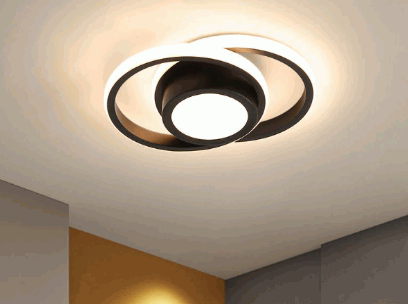LED ceiling lights have become increasingly popular in recent years due to their energy efficiency, long lifespan, and versatility in design.
We will explore how LED ceiling lights work, their advantages, and disadvantages, and how they compare to other types of lighting. We will also provide tips on what to consider before purchasing LED ceiling lights, such as room size, color temperature, dimming options, and brand quality.
Learn more about the pros and cons of using LED ceiling lights in your home or office.
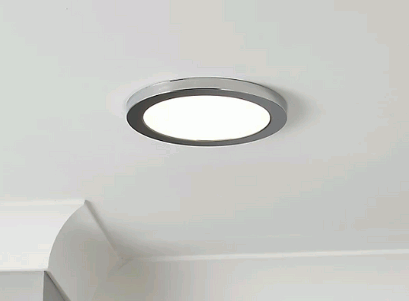
LED ceiling lights are energy-efficient lighting solutions designed to fit various ceiling light fittings, making them ideal for rooms with low ceilings. They utilise LED bulbs, which consume less energy compared to traditional lighting options, providing long-lasting and sustainable illumination.
There are several types of LED ceiling lights available, including flush mount, semi-flush mount, and recessed options, each offering a different aesthetic and level of brightness. These lights are versatile and come in various shapes, sizes, and designs to suit different room heights and styles.
The energy efficiency of LED ceiling lights not only reduces electricity bills but also contributes to environmental sustainability by decreasing carbon footprint. This eco-friendly feature makes them a popular choice for modern homes seeking to minimise energy consumption.
Find out more: Is LED Lighting Sustainable
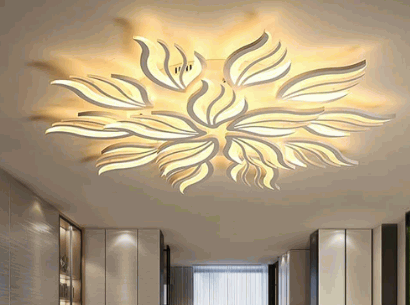
LED ceiling lights work by using integrated LEDs that emit light when an electrical current passes through them, and these can be adjusted to different colour temperatures based on the Kelvin Level.
Integrated LEDs are essentially small semiconductors arranged in a circuit on the light fitting's board. When electricity flows through the diode, it causes electrons to release energy in the form of photons, creating visible light. By adjusting the Kelvin Level, you can fine-tune the warmth or coolness of the light produced. This flexibility not only allows for customisation based on preferences but also plays a crucial role in setting the ambience of a space.
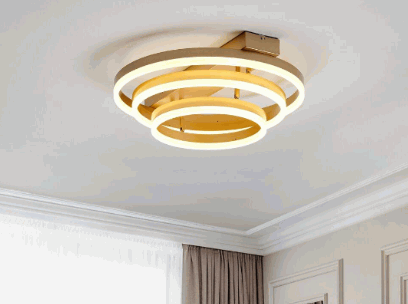
The advantages of using LED ceiling lights are numerous, ranging from being energy efficient to having a long lifespan, making them a superior choice compared to traditional lighting methods.
One of the primary benefits of LED ceiling lights is their energy efficiency, as they consume significantly less power compared to traditional halogen bulbs.
By utilising LED ceiling lights, households and businesses can experience a noticeable decrease in their electricity bills over time. This is due to the fact that LEDs convert a higher percentage of energy into light rather than heat, unlike halogen bulbs which produce more heat. As a result, the overall energy consumption is lower, translating to cost savings. The reduced energy usage of LED lights contributes to a smaller carbon footprint, making them a more environmentally friendly lighting option compared to traditional alternatives.
LED ceiling lights are known for their long lifespan, often lasting up to 50,000 hours, which significantly reduces the need for frequent replacements.
This longevity not only provides consistent lighting for longer periods but also contributes to the durability and cost-effectiveness of these lighting fittings. With typical lifespans averaging around 15-20 years of regular use, LED bulbs offer substantial savings in the long term. The reduced frequency of replacements not only saves money on new bulbs but also lowers maintenance costs over time. This makes them a practical choice for both residential and commercial settings, allowing users to enjoy reliable lighting without worrying about frequent changes.
The durability of LED ceiling lights, including models like the Morris Slimline LED Batten Tube Light, makes them a reliable and robust option for various lighting needs.
LED ceiling lights are typically constructed using high-quality materials such as aluminium and polycarbonate, which not only enhance their longevity but also ensure efficient heat dissipation. This construction plays a crucial role in preventing overheating and maintaining the performance of the light over time. The Morris Slimline LED Batten Tube Light, for example, is known for its sturdy build and excellent heat management capabilities.
LED ceiling lights offer versatility in design, accommodating various ceiling light fittings and styles such as rectangular LED panels.
In terms of shapes, LED ceiling lights are available in options ranging from round and square to more intricate geometric designs, allowing you to choose the perfect shape to complement your space.
These lights come in a variety of sizes, from compact and discreet options for smaller rooms to larger statement pieces that can become a focal point in a spacious area.
The fitting types for LED ceiling lights are also diverse, with recessed, surface-mounted, and pendant fittings among the popular choices, offering flexibility in installation depending on your ceiling structure and design preferences.
LED ceiling lights provide instant brightness without the flickering often associated with other types of lighting.
Thanks to the advanced LED technology, these ceiling lights are able to achieve immediate full light output, making them ideal for settings where instant illumination is crucial, such as offices, kitchens, and bathrooms. The absence of flickering not only enhances the aesthetics of the space but also brings significant benefits to eye health and overall comfort.
By eliminating flickering, LED ceiling lights reduce eye strain and fatigue, creating a more pleasant and productive environment for tasks that require focus and concentration. This stability in lighting can also contribute to a sense of well-being and can be particularly beneficial for individuals sensitive to light changes.
Whilst the initial investment might be higher, LED ceiling lights are cost-effective in the long run due to their energy efficiency and reduced maintenance costs.
LED lights consume significantly less electricity compared to traditional lighting options, resulting in substantial savings on energy bills over time. Their longer lifespan means less frequent replacements, reducing overall maintenance costs. This combination of energy efficiency and durability makes them a wise choice for both residential and commercial spaces, offering a notable return on investment in terms of financial savings and environmental impact.
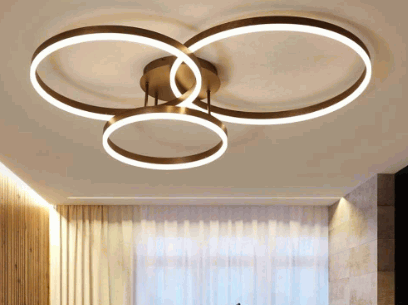
Despite their many advantages, LED ceiling lights also come with certain disadvantages, such as a higher initial cost, limited color options, and potential glare problems.
One of the main disadvantages of LED ceiling lights is their higher upfront cost compared to traditional lighting options.
LED ceiling lights tend to have a higher initial price due to the advanced technology and materials used in their production, such as semiconductor chips and heat sinks.
This initial investment is often offset by the significant savings in energy costs over the lifetime of the LED lights. LEDs are much more energy-efficient than traditional incandescent or fluorescent bulbs, consuming up to 80% less energy.
Moreover, LED lights have a longer lifespan compared to traditional lighting sources, reducing the need for frequent replacements and maintenance, which can further cut down on long-term costs.
When comparing the total cost of ownership, including energy consumption and maintenance expenses, LED ceiling lights prove to be a more cost-effective and sustainable lighting solution in the long run.
LED ceiling lights may have limited colour options, primarily offering shades of warm white and cool white.
Despite these constraints, one notable feature of LED lighting technology is the ability to adjust the colour temperature of the light emitted. This allows users to switch between warmer, more yellow tones and cooler, bluer hues, providing a certain degree of versatility within the limited colour spectrum.
On the contrary, traditional incandescent and fluorescent lights offer a wider array of colours, with options ranging from soft yellows to bright blues and everything in between. This variation makes them a popular choice for those seeking more eclectic lighting arrangements.
Potential glare can be an issue with LED ceiling lights, especially if the integrated LEDs are not properly diffused.
Glare in LED ceiling lights primarily stems from the intense brightness of the light source itself, which can cause discomfort and reduce visibility. The direct exposure to the uncovered LEDs can create harsh contrasts and make it challenging to focus on tasks. Designers have found that incorporating diffusers in the light fittings can help soften the light output, dispersing it more evenly throughout the space.
Furthermore, proper installation of the ceiling lights plays a crucial role in minimising glare. Mounting the fittings at the correct height and angle can significantly reduce direct eye contact with the LEDs, thus reducing the potential for glare. Product selection is also essential, with manufacturers offering a variety of diffuser options to suit different preferences and needs. By choosing fittings with appropriate diffusing mechanisms, individuals can enjoy the benefits of LED lighting without the drawbacks of glare.
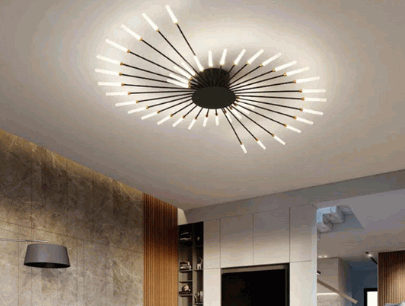
When comparing LED ceiling lights to other types of lighting like halogen bulbs and fluorescent lights, it becomes evident that LEDs are more energy efficient and have a longer lifespan.
Compared to incandescent lights, LED ceiling lights are significantly more energy efficient and have a much longer lifespan.
LED lights consume up to 80% less energy compared to traditional incandescent bulbs, making them an eco-friendly choice for lighting fittings. LEDs can last up to 25 times longer than incandescent lights, which means fewer replacements are needed, reducing both maintenance costs and environmental impact.
In terms of overall efficiency, LED ceiling lights outperform incandescent lights by providing brighter illumination using less energy, ultimately leading to lower electricity bills. The switch from incandescent to LED ceiling lights not only benefits the environment but also saves money in the long term.
LED ceiling lights, such as the Morris Slimline LED Batten Tube Light, offer several advantages over fluorescent lights, including better energy efficiency and longer lifespan.
LED lights are known for their superior energy efficiency, consuming up to 80% less energy than traditional fluorescent lights. This not only reduces electricity bills but also contributes to a greener environment by lowering carbon footprint.
In terms of maintenance, LED ceiling lights like the Morris Slimline require minimal upkeep compared to fluorescent lights which often need frequent bulb replacements. LED lights do not contain harmful mercury like fluorescent tubes, making them less harmful to the environment when disposed of.
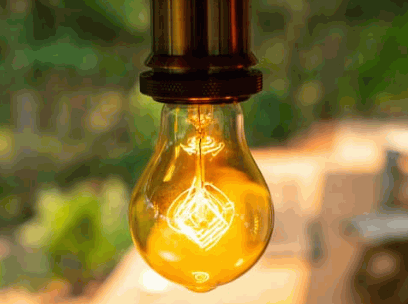
Before buying LED ceiling lights, it's important to consider factors such as room size, colour temperature preferences, available dimming options, and the overall quality of the product.
The size and layout of the room play a crucial role in determining the type and number of LED ceiling lights and ceiling light fittings needed for optimal illumination.
When evaluating room dimensions for LED ceiling lights, it's essential to consider the height of the ceiling to determine the appropriate mounting options. Proper positioning of the lights can enhance the overall aesthetic of the room while providing adequate brightness. Additionally, evaluating the room's function helps in deciding the type of lighting required; for instance, task lighting for work areas or ambient lighting for relaxation spaces. To achieve a balanced lighting coverage, strategic placement of LED ceiling lights around the room's perimeter or in the center can create a harmonious lighting atmosphere.
The color temperature of LED ceiling lights, measured in Kelvin Level, can range from warm white to cool white, affecting the ambiance of the space.
Warm white lighting with a color temperature of around 2700-3000K creates a cozy and intimate atmosphere, perfect for bedrooms, living rooms, and dining areas.
On the other hand, cool white lighting ranging from 3500-4500K is ideal for task-oriented spaces like kitchens, offices, and workrooms, as it promotes alertness and productivity.
For spaces requiring a balance between warmth and functionality, a neutral white light around 3500-4000K works well in areas like hallways and bathrooms. It provides a crisp, clean light without being too harsh or too dull.
Dimming options are an important feature of LED ceiling lights, allowing users to adjust the brightness levels of integrated LEDs according to their needs.
LED ceiling lights equipped with dimming capabilities offer numerous benefits to users. One of the key advantages is the ability to create different ambiences in a room, from bright and energising to soft and cosy, with just a simple adjustment of the dimmer switch.
When considering compatibility with dimmer switches, it is essential to choose LED lights that are specifically labelled as 'dimmable.' Not all LED lights are designed to work with dimmers, so selecting the right products ensures smooth operation and longevity.
When purchasing LED ceiling lights, considering the brand and quality is essential, with reputable brands like Tom Dixon, DM Lights, and Heal’s offering reliable options.
Opting for high-quality LED ceiling lights from trusted brands not only ensures longevity but also guarantees superior performance. Brands like Tom Dixon, DM Lights, and Heal’s have established themselves as industry leaders due to their commitment to producing top-notch lighting solutions.
By investing in reputable brands, consumers can be confident in the durability and efficiency of their LED ceiling lights, contributing to a more sustainable and cost-effective lighting solution for their spaces.
